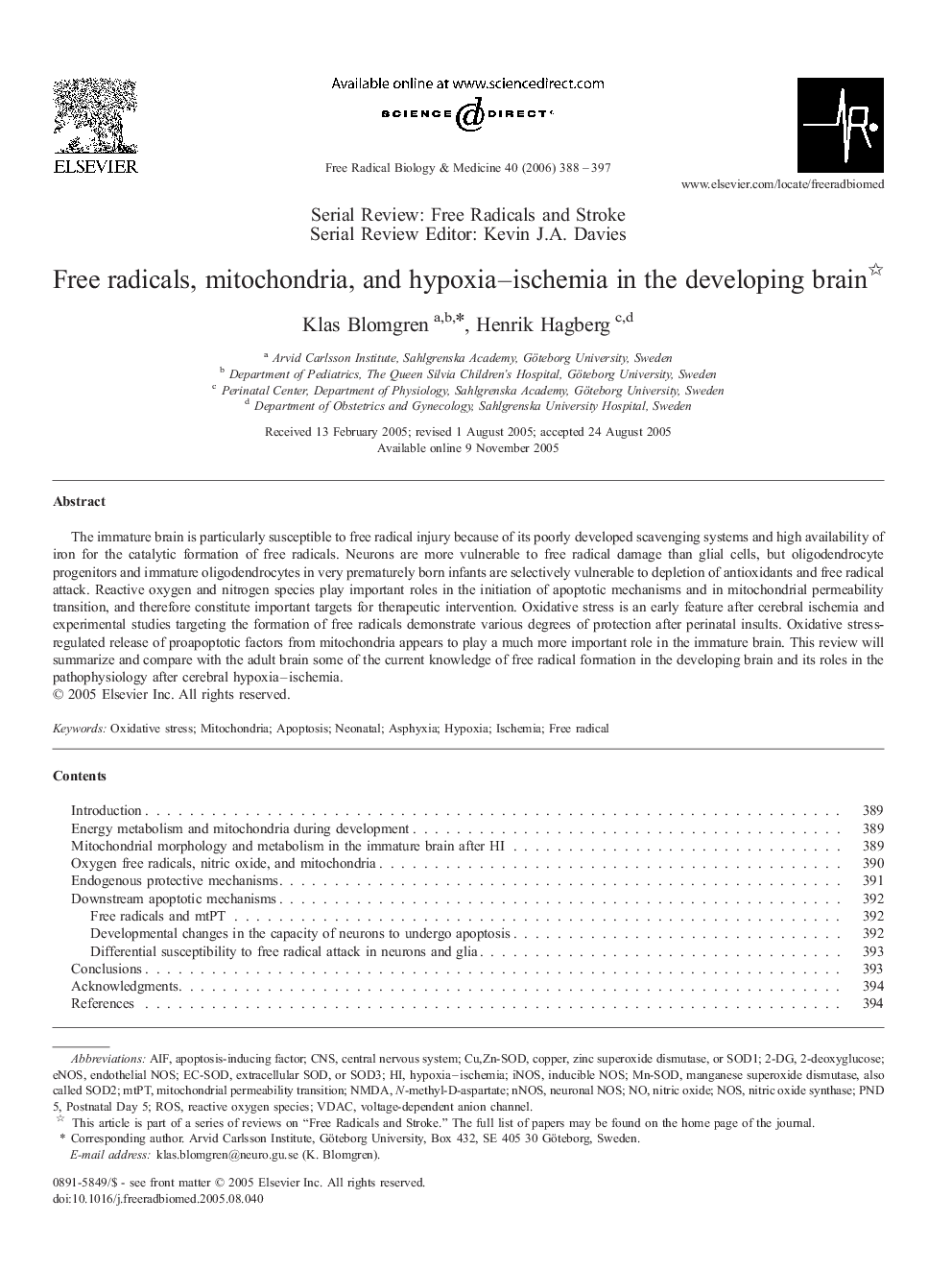| Article ID | Journal | Published Year | Pages | File Type |
|---|---|---|---|---|
| 1912011 | Free Radical Biology and Medicine | 2006 | 10 Pages |
The immature brain is particularly susceptible to free radical injury because of its poorly developed scavenging systems and high availability of iron for the catalytic formation of free radicals. Neurons are more vulnerable to free radical damage than glial cells, but oligodendrocyte progenitors and immature oligodendrocytes in very prematurely born infants are selectively vulnerable to depletion of antioxidants and free radical attack. Reactive oxygen and nitrogen species play important roles in the initiation of apoptotic mechanisms and in mitochondrial permeability transition, and therefore constitute important targets for therapeutic intervention. Oxidative stress is an early feature after cerebral ischemia and experimental studies targeting the formation of free radicals demonstrate various degrees of protection after perinatal insults. Oxidative stress-regulated release of proapoptotic factors from mitochondria appears to play a much more important role in the immature brain. This review will summarize and compare with the adult brain some of the current knowledge of free radical formation in the developing brain and its roles in the pathophysiology after cerebral hypoxia–ischemia.
